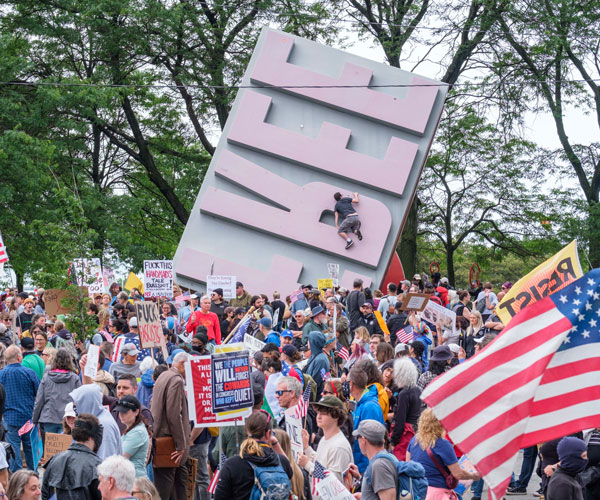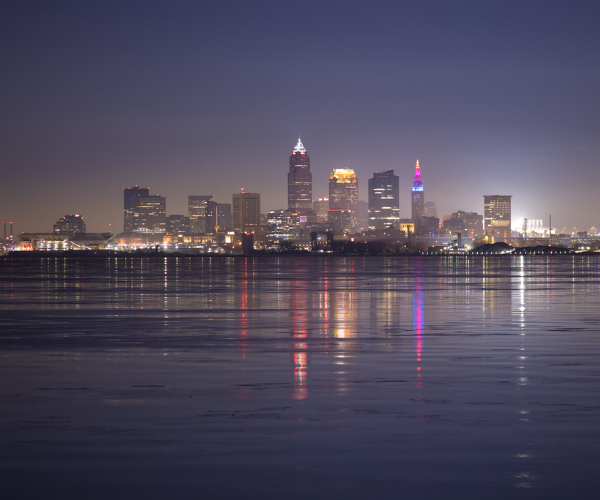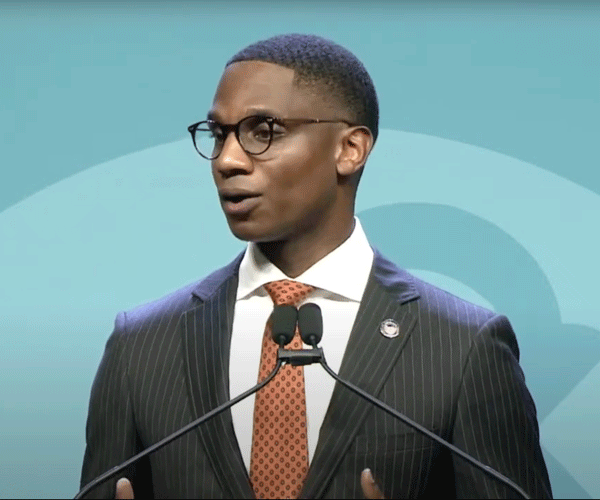The former mayor hugged the former city council president.
"Hello, George," said George Voinovich to George Forbes. "It's been a long time, hasn't it?"
From 1979, when Voinovich became mayor, to 1989, he and Forbes forged an alliance at Cleveland City Hall, cooperating across party and racial lines to lift the city from default and spark a downtown building boom. Cleveland Magazine reunited Voinovich and Forbes this fall to talk about their 10-year partnership.
Voinovich unseated Dennis Kucinich, whose two years as mayor were dominated by ferocious political combat, feuds with business and Cleveland's 1978 default.
George Voinovich | [Forbes] was really fed up with what was going on. It was a Balkanized situation: fighting, screaming, default. It was chaos.
George FORBES | When Dennis left, I thought I was doing God's work in trying to get rid of him. After he was defeated, I was at a street club meeting, and an elderly black man said, "Son, why don't y'all get along downtown?" What he was saying was, "Forget about the racial stuff. All this turmoil that's tearing the city apart. We're tired of it. Go down there and make it work."
Voinovich and Forbes were each pressured to advance their party's interests, but they pledged to work together.
Voinovich | He was the most powerful council president we've ever had. They were all Democrats in city council. I figured out that if we didn't become partners, we wouldn't get anything done.
FORBES | Here was a guy I had not had a close relationship with — and I was suspect of him! — and we had a 10-year period of racial peace and racial harmony.
Voinovich | We were known as Big George and Little George. I was little.
FORBES | One day he sucked me in on that. Somebody said, "Big George or Little George?" And I said, "I'm Big George." And he said, "Only in size!"
Voinovich | There'd be articles: "Who runs City Hall? Is the mayor really running it, or is George Forbes running it?" When people asked me the question, I said, "We both run City Hall, together."
FORBES | I had one thing in mind at City Hall: To make sure blacks get a fair shot. One day he told me, "Whatever you do, you make sure that black people are taken care of."
Voinovich | It wasn't BS. We created the first minority development center in the country that was located in City Hall. That was a big deal for me, because I knew it was a big deal for [him].
FORBES | I always laughed at [journalists] who said I was the lion tamer and I made people toe the line. But I understood what a councilman wanted. My job was to say to the mayor, "So-and-So wants a recreation center in his ward. We paved streets for Miss So-and-So." That's how you develop a working coalition.
During the '80s, Sohio built a headquarters downtown, Forest City began the Tower City project and Dick Jacobs began building Key Tower. Voinovich and Forbes broke a taboo against tax abatements to grant them to Key Tower, now Cleveland's tallest building.
Voinovich | Cleveland had no tax abatement to speak of. Other cities were really into tax abatement for five to 10 years. You talk about that kind of a building, and the jobs created and the image for the city? That was a big deal.
FORBES | I knew that Cleveland was restricted to a certain attitude: "We did this in the past, this is what we always did in the past, and we've got to keep doing it." When Jacobs came with his plan, I said, "Build the building taller than Terminal Tower, so we can break out of these things that have held us back for years." He said, "You bet. I'm going to do that."
Voinovich | When we were all finished, USA Today wrote up the two of us, about how this African-American city council president, a Democrat, and this white Republican mayor got together and made a difference for the city. That, to me, was a triumph. I gotta tell you, it was Camelot.



